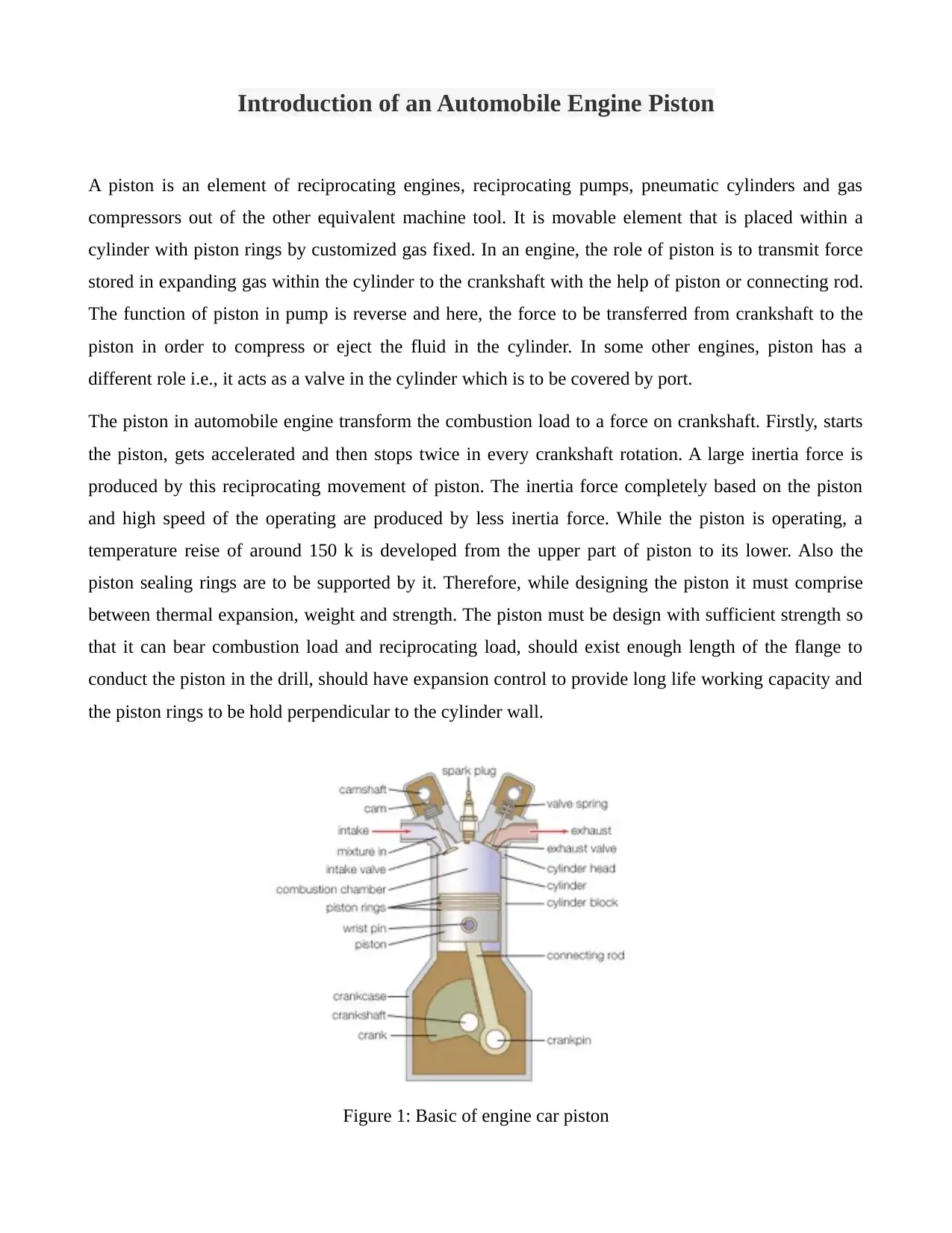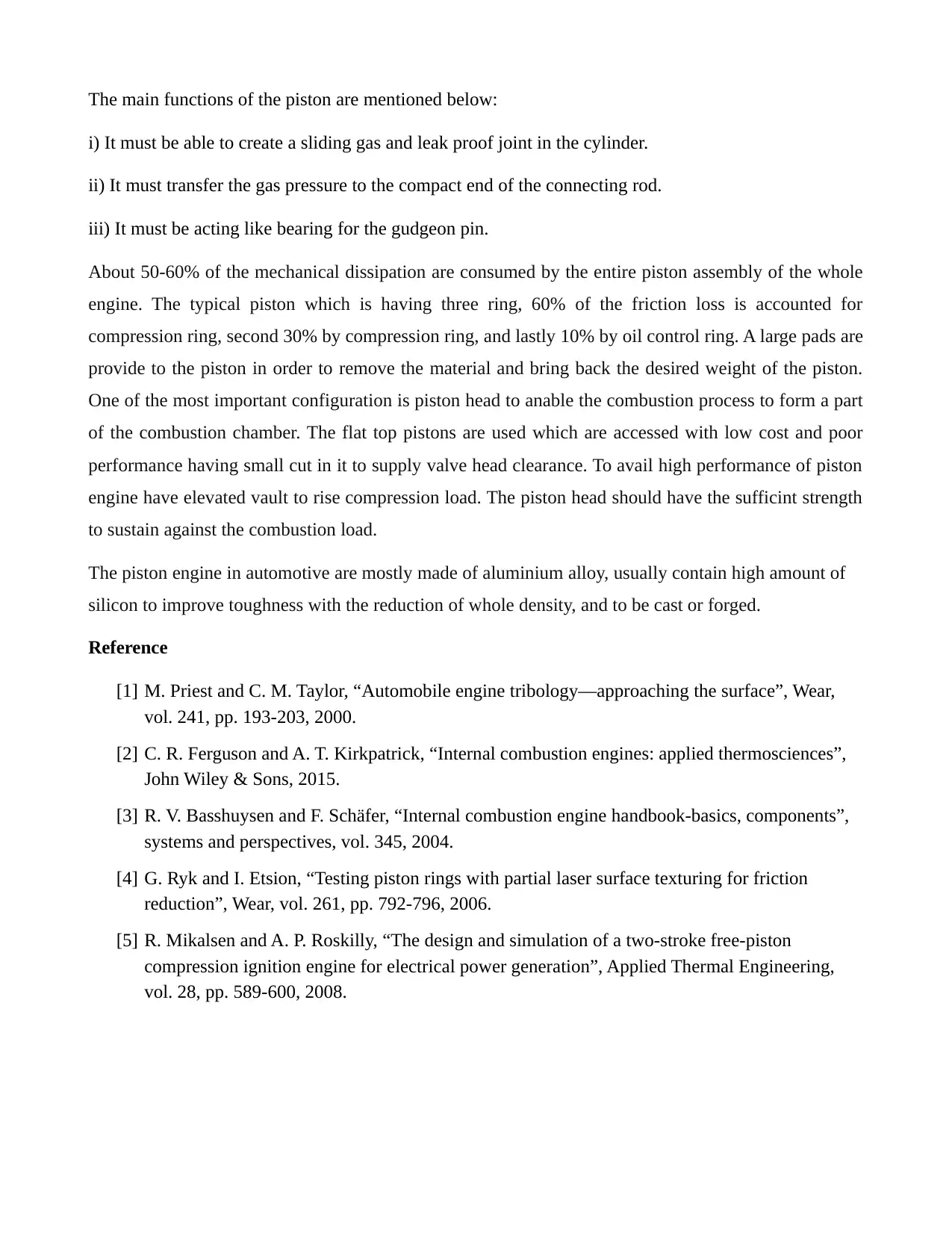Analysis of Automobile Engine Piston: Introduction and Key Functions
VerifiedAdded on 2022/11/14
|2
|743
|302
Report
AI Summary
This report provides an introduction to the automobile engine piston, a crucial component in reciprocating engines. It details the piston's primary function of transmitting force from expanding gases to the crankshaft, highlighting its role in converting combustion energy into mechanical work. The report discusses the piston's design, including its ability to create a gas-tight seal within the cylinder, transfer gas pressure, and act as a bearing for the gudgeon pin. It also covers the materials used, typically aluminum alloys with high silicon content, and the importance of balancing factors like thermal expansion, weight, and strength. The report emphasizes the significance of piston rings, which account for a significant portion of engine friction, and how piston head design impacts combustion. Finally, the report references several sources, including research papers and handbooks, that further explore piston tribology, internal combustion engine design, and related topics.
1 out of 2








![[object Object]](/_next/static/media/star-bottom.7253800d.svg)